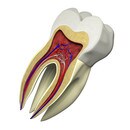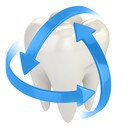News
Most Brazilians have low antioxidant intakes
27 April 2011
Large parts of the adult Brazilian population have dietary vitamin A, C and E intakes below recommended values, according to a new study.
01 November 2011
Healthy teeth and gums are a significant factor in demonstrating quality of life and ought to be preserved into old age. Aside from adequate oral hygiene, nutrition makes a fundamental contribution in doing so. Both an excess and a lack of certain nutrients in the diet can lead to characteristic oral disorders. A shortage of micronutrients, for example, can considerably impair oral health. Conversely, oral health problems can contribute to malnutrition, as can be seen in people who cannot chew without pain or discomfort because of a disorder or in people without teeth.
 Even for an unborn child, sufficiently high concentrations of micronutrients in the womb are an important prerequisite for creating healthy tooth germs. As soon as the teeth have erupted, certain micronutrients contribute locally to the preservation of the tooth substance. Micronutrients have a lifelong systemic effect on the health of the periodontal attachment apparatus, i.e. the jawbones and the periodontium. This also applies to all other muscles and tissues in the mouth and jaw.
Even for an unborn child, sufficiently high concentrations of micronutrients in the womb are an important prerequisite for creating healthy tooth germs. As soon as the teeth have erupted, certain micronutrients contribute locally to the preservation of the tooth substance. Micronutrients have a lifelong systemic effect on the health of the periodontal attachment apparatus, i.e. the jawbones and the periodontium. This also applies to all other muscles and tissues in the mouth and jaw.
 Factors influencing oral health
Factors influencing oral health
The life expectancy of the global population is rising, especially in industrialized countries. From the dental perspective, the main problem is the loss of teeth in old age due to poor health in the periodontal attachment apparatus. However, thanks to the use of dental hygiene products with fluoride, caries (tooth decay involving microorganisms) is on the decline in industrialized nations. The loss of hard tooth tissue as a result of chemical (erosive) and mechanical (abrasive) processes, i.e. from the frequent consumption of acidic and hard foods, is a lifelong problem which needs to be prevented. Tooth erosion can occur when acids from foods dissolve the tooth’s calcium, a crucial component of the dental enamel, and thus soften the outer protective layer of the teeth. Diseases affecting dental enamel and dentin (caries), as well as diseases like gingivitis (inflammation of the gums) and periodontitis (inflammation of the periodontal attachment apparatus), are caused by bacteria that can never be entirely eliminated from the mouth. Keeping these bacteria in check with regular and systematic oral hygiene is essential, as it prevents germs from breeding in the oral cavity.
Alongside this, nutrition can either strengthen or weaken the teeth and periodontal attachment apparatus. Micronutrient deficiency can considerably damage oral health. Conversely, diseases in the mouth – the first section in the digestive tract – can lead to micronutrient deficits in nourishment, .e.g. if food cannot be chewed properly because of pain or impairments, the body cannot properly benefit from it, either. Tooth and gum disorders in industrialized countries are found most frequently in the socially deprived, uneducated classes. This is particularly true of caries, which is mainly a problem for children and young people. Since the amount of older people is increasing worldwide, the problem of tooth loss due to disorders of the periodontal attachment apparatus and jawbone depletion is also on the rise.
 Systemic effect of micronutrients
Systemic effect of micronutrients
Teeth are protected from chemical or mechanical attacks by the hard tooth tissue, consisting of dental enamel, dentin and the root cementum. Nutrients can only influence the hard tooth tissue systemically during its original formation, i.e. before eruption of the teeth. As the teeth develop in the organism, an organic matrix is generated, which is subsequently mineralized with calcium and phosphate. During matrix generation, extreme mineral deficits can cause structural changes in the dental enamel, e.g. pits or indentations. Insufficient nutrient supplies during mineralization of the enamel can lead to opaque whitish spots on the upper part of the tooth, although not to deformations.
Only a vitamin D deficiency in pregnant women can have a systemically negative effect on the quality of the dental germs in the fetus. Deficient nutrition of an expectant mother does not otherwise affect tooth development in the fetus, as the mineral requirement of the dental germs is relatively low (1). Studies have shown that, unlike bones, teeth that were formed in the fetus during situations of calcium and phosphate deficiency present a normal mineral composition. Conversely, with a deficiency in childhood and adulthood, calcium and phosphates can no longer be mobilized from teeth (2).
Vitamin D
Teeth can only anchor themselves securely in a stable, healthy jawbone and only a healthy, intact periodontal attachment apparatus can guarantee such a secure anchorage. A good vitamin D supply is essential for preserving the health of the whole musculoskeletal system, including the jawbone and gums. An insufficient vitamin D supply can contribute both to the loss and softening of bony substance (osteoporosis, osteopenia), as well as to the development of chronic inflammatory disorders caused by a disturbance of the mineral balance (e.g. of calcium absorption). Recent studies have investigated the connections between the density of jawbones (alveolar bones), osteoporosis and tooth loss. They showed that the health of the periodontal attachment apparatus depends on a sufficiently high concentration of vitamin D in the blood (3-5). In addition, vitamin D status also seems to be crucial for healing successfully after receiving an operation because of inflammatory changes in the gums (periodontitis) (6). Patients with chronic periodontitis seem to benefit from the administration of additional vitamin D in combination with calcium (7). Essentially, however, a good supply of vitamin D is recommended for the prevention of disorders of the jawbone and periodontal attachment apparatus.
Apart from vitamin D’s basic immune-strengthening, anti-inflammatory properties, the immune defense of the gum tissue against inflammatory germs seems to be connected with certain gene variants (polymorphisms) of the vitamin D receptor (VDR) as well. Thus, researchers discovered that it was principally people with a particular VDR polymorphism who suffered from chronic, aggressive periodontitis (8). The conjecture is that vitamin D induces the synthesis of an antimicrobial peptide via the bond with VDRs.
Pregnant women in particular often suffer from bleeding gums or even an inflammation of the gums or periodontium. Studies suggest that aside from diligent oral hygiene and dental checkups, a good supply of vitamin D can also help prevent this (9). An optimal vitamin D status appears to benefit not only the pregnant woman, but the dental health of her future offspring as well. Study results indicate that children from ages 9 to 23 months who have mothers with good blood levels of vitamin D have considerably less caries (10, 11).
Antioxidants
The antioxidant vitamins E and C as well as carotenoids (e.g. beta-carotene) neutralize oxidative stress in all cells and tissues of the organism. Thus, they appear to strengthen the immune resistance of the gums via antioxidants, and in particular to act against invading germs in the mucous membrane of the mouth. Studies found a connection between low levels of antioxidants in serum and an increased occurrence of periodontitis (12, 13). Insufficient levels of vitamin C appear to promote the risk of disorders of the gums and periodontal attachment apparatus. Conversely, a good supply of vitamin C could prevent these disorders (14, 15). One disorder typical of severe vitamin C deficiency is scurvy; a less severe vitamin C deficiency may cause gingivitis (the bleeding of receded gums).
B Vitamins
A disturbed DNA synthesis as a result of vitamin B12 and folate deficiency can lead to an alteration of the rapidly dividing (epithelial) cells in the mucous membrane of the mouth. Typical vitamin B deficiency can cause a red, swollen and burning tongue, cracked lips and corners of the mouth, as well as alter the sensation of taste (16, 17).
 Local effect of micronutrients
Local effect of micronutrients
Once the teeth have erupted, they can only be affected locally by micronutrients (18). The trace element fluoride and the mineral calcium are the principal components of tooth enamel. The enamel undergoes a continuous process of dissolution (demineralization) and regeneration (remineralization). Acid-forming bacteria like Streptococcus mutans, the germ mainly responsible for caries, as well as acids from foodstuffs, dissolve fluoride and calcium from the tooth enamel, thus making it softer. Fluoride and calcium in saliva or in food, as well as in toothpaste and other dental hygiene products, can remineralize and harden the tooth enamel again (20-22). Fluorides administered via fortified drinking water, fortified food or fluoride tablets for infants can help in maintaining healthy teeth.
Fluorides
Locally acting fluorides make up a crucial element of keeping teeth healthy and protecting against caries and attack by acids. Fluoride ions strengthen the hard tooth tissue by depositing themselves in the tooth enamel, thus preventing the dissolution of the essential tooth nutrient calcium and promoting the depositing of calcium in the tooth (21). There are also indications that fluorides can inhibit the metabolism of caries bacteria so that they produce fewer organic acids that attack the tooth enamel (22).
Calcium
Apart from vitamin D and phosphate, calcium is the most important component of teeth and bones. With low blood levels, calcium is removed from the target tissues and finds its way into the blood; with high blood levels, calcium is deposited again into the bones and teeth. When blood concentrations of calcium are too low, the body appears to want to first supply the teeth with calcium and then the bones. Calcium is especially important for the development of hard tooth enamel in children, where it acts locally on the teeth from the outside (1).
27 April 2011
Large parts of the adult Brazilian population have dietary vitamin A, C and E intakes below recommended values, according to a new study.
4 April 2014
According to a new study from China school children with vitamin D deficiency have an elevated risk of developing diseases caused by higher levels of obesity and oxidative stress.
18 October 2012
Higher magnesium intake seems to be associated with a reduction in the risk of colorectal cancer, in particular colon cancer, suggests a new study from China.